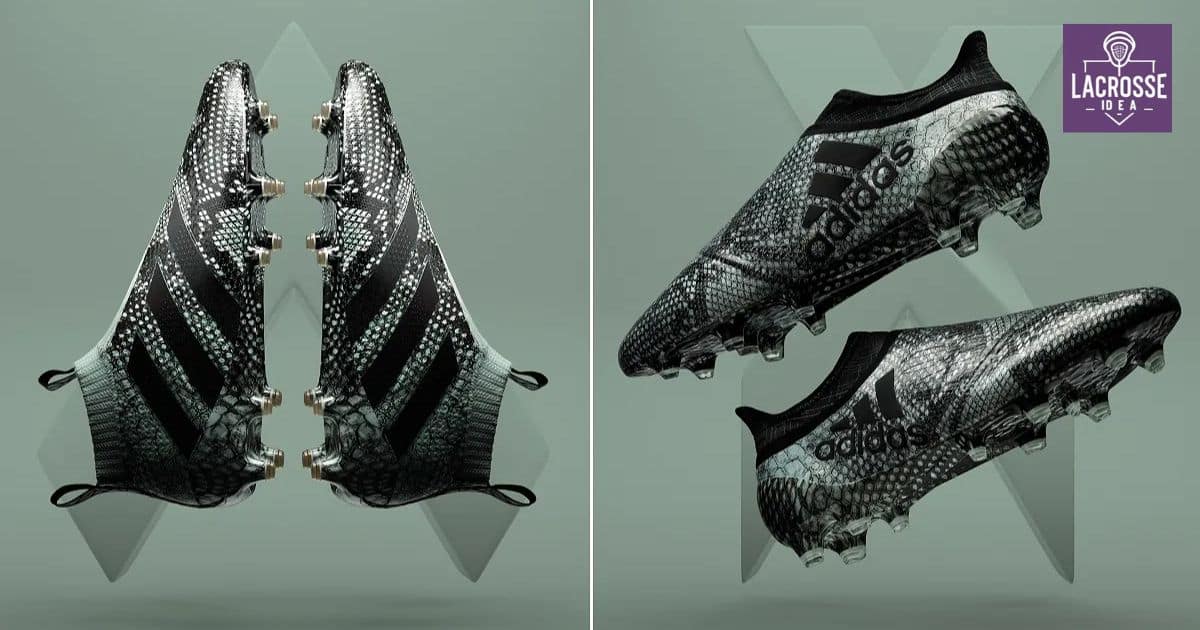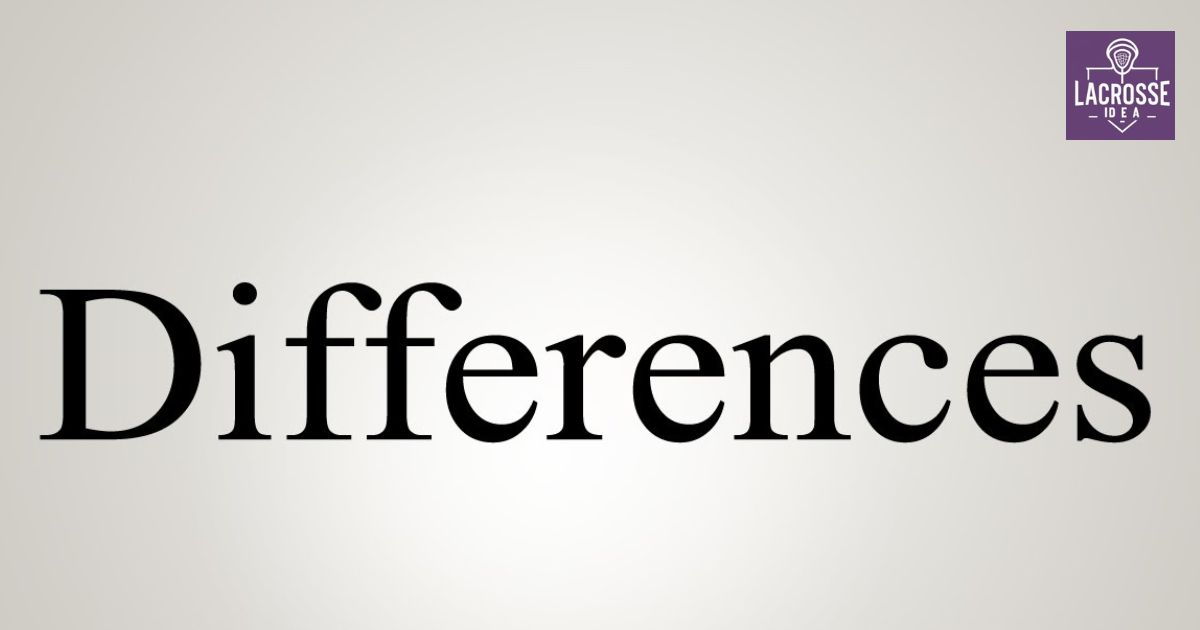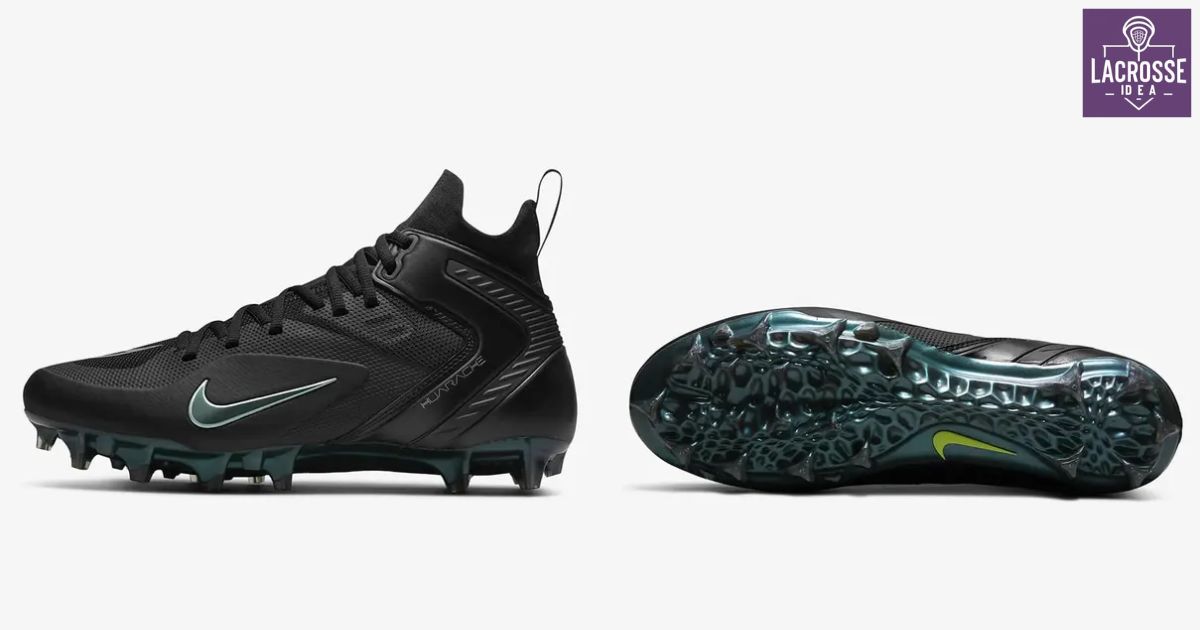Did you know that 70% of people who play soccer also play lacrosse? With the increasing popularity of both sports, it’s important to understand the differences between soccer and lacrosse cleats. In this article, we will explore the key distinctions between these two types of cleats and answer the burning question: are soccer and lacrosse cleats the same? Whether you’re a soccer player curious about trying lacrosse or a lacrosse player considering soccer, this guide will provide valuable insights to help you make an informed decision.
Key Takeaways
- Lacrosse cleats are designed for quick lateral movements, frequent stops and starts, and a higher level of physical contact, while soccer cleats prioritize agility, speed, and ball control.
- Lacrosse cleats offer superior stability and ankle support, while soccer cleats are typically lighter and more flexible.
- Lacrosse cleats have cleat patterns designed for quick multidirectional movements and toe reinforcement for shooting and passing, whereas soccer cleats prioritize a low-cut design for agility and lightweight for speed.
- Soccer cleats are designed for optimal ball control and kicking accuracy, while lacrosse cleats focus on grip and stability and often have reinforced toe caps for protection against stick checks.
Lacrosse Cleats Vs Soccer Cleats
There are several key differences between lacrosse cleats and soccer cleats. While both types of cleats are designed to provide traction on the field, lacrosse cleats are specifically engineered to meet the demands of the sport. Lacrosse involves quick lateral movements, frequent stops and starts, and a higher level of physical contact, which require cleats that offer superior stability and ankle support.
Soccer cleats, on the other hand, prioritize agility, speed, and ball control. They are typically lighter and more flexible, allowing for quick changes in direction and quick acceleration. Additionally, soccer cleats often have a larger surface area on the front of the foot to enhance shooting and passing accuracy. Now, let’s explore whether lacrosse cleats can be worn for soccer.
Can You Wear Lacrosse Cleats For Soccer?
When considering whether lacrosse cleats can be worn for soccer, it is important to evaluate the specific features and requirements of each sport. While there may be some similarities between the two sports, such as the need for traction and stability on the field, there are also key differences that must be taken into account.
| Lacrosse Cleats | Soccer Cleats |
|---|---|
| Mid-cut or high-cut for ankle support | Low-cut for agility |
| Sturdy construction for physical play | Lightweight for speed |
| Cleat pattern designed for quick multidirectional movements | Cleat pattern optimized for running and kicking |
| Toe reinforcement for shooting and passing | No toe reinforcement for better ball control |
While lacrosse cleats may provide some benefits for soccer, such as ankle support and durability, they may not offer the same level of agility and ball control that soccer cleats are specifically designed for. Transitioning into the next section, let’s explore whether soccer cleats can be worn for lacrosse and the considerations that need to be made.
Can You Wear Soccer Cleats For Lacrosse?
To determine whether soccer cleats can be worn for lacrosse, it is important to consider the specific features and requirements of each sport. While soccer and lacrosse share similarities in terms of field conditions and the need for traction, there are key differences that make dedicated lacrosse cleats preferable. Lacrosse involves more aggressive lateral movements and quick changes in direction, which require cleats with superior ankle support and stability.
Additionally, lacrosse cleats often have a higher heel and more cushioning to absorb the impact of running and cutting. Soccer cleats, on the other hand, are designed for optimal ball control and kicking accuracy. While soccer cleats may provide some level of functionality in lacrosse, they may not provide the necessary support and performance for the sport.
In the subsequent section, we will quickly summarize the specific features of soccer cleats and lacrosse cleats to provide a comprehensive understanding of their differences.
Soccer Cleats Vs Lacrosse Cleats | Quickly Summarized
Continuing the comparison between soccer cleats and lacrosse cleats, it is important to highlight their distinct features and functional differences. Here is a quick summary of what sets them apart:
- Soccer cleats are designed for optimal traction on grass and turf surfaces, with specialized studs or blades that provide stability and grip during quick directional changes and acceleration.
- Lacrosse cleats, on the other hand, prioritize ankle support and flexibility, as they are specifically engineered for the demands of the sport, which involves frequent running, cutting, and lateral movements on both grass and artificial turf.
- Soccer cleats often have a larger surface area for striking the ball, with a more pronounced toe box, while lacrosse cleats feature a more streamlined and low-profile design to enhance agility and speed.
Understanding these differences is crucial in choosing the right footwear for each sport. Now, let’s delve into the specific variations between soccer and lacrosse cleats.
The Differences Between Soccer And Lacrosse Cleats
Soccer and lacrosse cleats exhibit distinct differences in design and functionality. While both types of cleats are designed to provide traction on grass or turf surfaces, soccer cleats prioritize ball control and agility, while lacrosse cleats focus on stability and support.
To illustrate these differences, let’s compare the two in a table:
| Soccer Cleats | Lacrosse Cleats | |
|---|---|---|
| Design | Lightweight with low-cut or mid-cut profile for freedom of movement | Mid-cut or high-cut profile for ankle support and stability |
| Traction | Studded or bladed outsole for quick multidirectional movements | Wider, flatter cleats for enhanced grip during sudden stops and changes in direction |
| Upper Material | Thin, synthetic materials for a close fit and enhanced ball touch | Thicker, more durable materials to withstand physical contact |
| Specialty Features | Texture on the upper for better ball control | Reinforced toe caps for protection against stick checks |
Soccer Vs. Lacrosse Cleats: What’s The Main Difference
There are several key differences between soccer and lacrosse cleats that distinguish them from each other. These differences include:
- Traction: Soccer cleats are designed to provide traction on grass surfaces, while lacrosse cleats are designed for both grass and turf surfaces.
- Ankle Support: Lacrosse cleats typically offer more ankle support than soccer cleats, as the nature of the game requires more lateral movements and changes in direction.
- Toe Protection: Lacrosse cleats often have reinforced toe caps to protect players’ feet from getting hit by a stick or ball.
These distinctions highlight the specific needs and demands of each sport, ensuring that players have the appropriate footwear for optimal performance and safety. Now, let’s take a closer look at which one is better for athletes in the next section.
Which One Is Better? A Closer Look
Taking a closer look at soccer and lacrosse cleats, it becomes evident that one sport may have an advantage over the other in terms of performance and suitability. While both types of cleats are designed to provide traction and support on grass or turf, there are some key differences that make one better suited for each sport.
| Soccer Cleats | Lacrosse Cleats |
|---|---|
| Lighter and more flexible | Sturdier and more protective |
| Designed for quick movements and agility | Designed for stability and hard impact |
| Typically have a low-cut design | Often feature a mid-cut or high-cut design |
| Emphasize ball control and touch | Focus on grip and stability |
Soccer cleats are typically lighter and more flexible, allowing for quick movements and agility on the field. They are designed to enhance ball control and touch, which are crucial skills in soccer. On the other hand, lacrosse cleats are sturdier and more protective, with a focus on stability and hard impact. They often feature a mid-cut or high-cut design to provide ankle support during the physical nature of lacrosse.
What Are Soccer Cleats?
The distinguishing characteristics of soccer cleats make them essential footwear for players participating in the sport. Soccer cleats, also known as football boots in some countries, are specifically designed to provide players with stability, traction, and control on the field. Here are some key features of soccer cleats:
- Studs or spikes: Soccer cleats have either molded or detachable studs or spikes on the sole. These provide players with grip and traction on the grass or turf, allowing them to make quick turns and movements without slipping.
- Lightweight construction: Soccer cleats are typically made from lightweight materials like synthetic leather or mesh to ensure agility and speed on the field.
- Enhanced ball control: Soccer cleats often feature a textured upper or special technologies to improve ball control, allowing players to manipulate the ball with precision.
With their unique design and functionality, soccer cleats are an essential piece of equipment for soccer players, helping them perform at their best and feel a sense of belonging on the field.
What Are Lacrosse Cleats?
Lacrosse cleats, like their soccer counterparts, are specialized footwear designed to provide lacrosse players with the necessary stability, traction, and control on the field. Lacrosse is a fast-paced and physically demanding sport that requires quick movements, sudden changes in direction, and explosive bursts of speed. To meet these demands, lacrosse cleats are specifically engineered to enhance performance and reduce the risk of injury.
Lacrosse cleats typically feature a low-cut design that allows for greater ankle mobility while still providing adequate support. They are equipped with cleats or studs on the outsole to improve traction and grip on the grass or turf. The upper of lacrosse cleats is made from durable materials such as synthetic leather or mesh, which offer breathability, flexibility, and protection.
In addition to their functional features, lacrosse cleats also come in a variety of stylish designs and colorways, allowing players to express their individuality and team spirit. Whether you are a beginner or a seasoned player, investing in a pair of high-quality lacrosse cleats is essential for optimal performance and enjoyment of the game.
Similarities Between Soccer And Lacrosse Cleats
Soccer and lacrosse cleats share several similarities in their design and functionality. Both types of cleats are designed to provide traction on grass or turf surfaces, allowing players to grip the ground and make quick and agile movements. They both feature a series of studs or spikes on the sole of the shoe, which help to prevent slipping and sliding during gameplay.
Additionally, both soccer and lacrosse cleats are typically made with lightweight materials to enhance speed and agility on the field. Overall, the similarities between soccer and lacrosse cleats make them suitable for use in either sport, providing players with the necessary support and traction to excel in their respective games.
Key Differences Between Soccer And Lacrosse Cleats
When comparing soccer and lacrosse cleats, it is important to note the key differences between the two in terms of design and functionality. While both types of cleats are designed to provide traction on the field, there are distinct variations that cater to the specific needs of each sport.
| Soccer Cleats | Lacrosse Cleats |
|---|---|
| Lightweight and flexible | Sturdy and supportive |
| Designed for quick movements and agility | Built for stability and protection |
| Feature low-cut designs for better maneuverability | Often have mid-cut or high-cut designs for ankle support |
| Have specialized studs or blades for different field conditions | Tend to have longer and thicker studs for better grip on grass fields |
Soccer cleats prioritize speed and agility, with a focus on lightweight materials and flexibility. Lacrosse cleats, on the other hand, prioritize stability and protection, with more supportive structures and higher cuts. Additionally, the stud designs on soccer cleats vary depending on the field conditions, while lacrosse cleats typically have longer and thicker studs for better grip on grass fields. These key differences ensure that each type of cleat optimizes performance for their respective sports.
My Thoughts On Lacrosse Cleats Vs Soccer Cleats
In comparing soccer and lacrosse cleats, it is evident that there are significant differences in their design and functionality. As someone who has played both sports, I have formed some thoughts on the topic. Here are a few key points to consider:
- Traction: Soccer cleats are designed for various playing surfaces, including grass and artificial turf, whereas lacrosse cleats prioritize traction on grass fields.
- Ankle Support: Lacrosse cleats often feature higher ankle support to protect against the physical demands of the game, while soccer cleats typically have a lower cut to allow for more range of motion.
- Stud Patterns: Soccer cleats have a variety of stud patterns to accommodate different field conditions, while lacrosse cleats generally have a more uniform stud pattern for consistent traction.
Ultimately, the choice between lacrosse and soccer cleats depends on the specific needs and preferences of the player. Both offer unique features tailored to the demands of their respective sports.
Last Verdict
After examining the design and functionality of soccer and lacrosse cleats, it is clear that they are not the same. While both cleats serve the purpose of providing traction on grass or turf surfaces, there are notable differences that make them distinct from each other. Soccer cleats are designed to optimize performance on the soccer field, with features such as a low-cut design, lightweight materials, and strategically placed studs for quick movements and precise ball control.
On the other hand, lacrosse cleats are specifically tailored to the needs of lacrosse players, featuring a mid-cut or high-cut design for ankle support, additional padding for protection, and sturdy outsoles to withstand the demands of the game. Therefore, it is crucial for athletes to choose the appropriate cleats based on the sport they are playing to enhance their performance and reduce the risk of injuries.
Can Soccer Cleats Be Worn For Lacrosse?
Soccer cleats are not recommended for wearing during lacrosse due to the distinct design and functionality differences between the two types of cleats. While soccer and lacrosse cleats may appear similar at first glance, they serve different purposes and are designed to enhance different aspects of the game. Here are three reasons why soccer cleats should not be worn for lacrosse:
- Traction: Lacrosse cleats are specifically designed to provide optimal traction on grass fields, allowing players to make quick cuts and changes in direction. Soccer cleats, on the other hand, are designed for different field conditions and may not provide the same level of traction on grass.
- Support: Lacrosse cleats typically offer more ankle support and stability to protect against the lateral movements and physical demands of the sport. Soccer cleats, on the other hand, prioritize flexibility and agility.
- Durability: Lacrosse cleats are built to withstand the rigors of the sport, including the constant running, cutting, and physical contact. Soccer cleats may not be as durable and may not hold up as well under the demands of lacrosse.
Frequently Asked Questions
Are Soccer Cleats and Lacrosse Cleats Made From the Same Materials?
While soccer and lacrosse cleats may have similar designs and features, the materials used in their construction can vary. Soccer cleats often have a combination of leather and synthetic materials, while lacrosse cleats may prioritize lightweight materials for agility and speed.
Can Soccer Cleats Provide Enough Traction for Playing Lacrosse?
Can soccer cleats provide enough traction for playing lacrosse? The traction needs in lacrosse differ from soccer due to the nature of the sport. Lacrosse cleats are designed to provide the necessary grip and stability for quick movements and changes in direction on the field.
Do Soccer Cleats Offer the Same Level of Ankle Support as Lacrosse Cleats?
While soccer cleats and lacrosse cleats may have some similarities, such as the type of studs or spikes used, it is important to note that the level of ankle support provided by soccer cleats may not be the same as that offered by lacrosse cleats.
Are Lacrosse Cleats Designed to Be More Lightweight Than Soccer Cleats?
Lacrosse cleats are typically designed to be more lightweight than soccer cleats. This allows lacrosse players to move quickly and agilely on the field. However, it is important to consider individual preferences and playing style when choosing cleats.
Can Lacrosse Cleats Be Used on Artificial Turf Soccer Fields?
Lacrosse cleats are designed for the specific demands of the sport, such as quick lateral movements and traction on grass fields. However, they may not provide the same level of performance on artificial turf soccer fields due to differences in surface and playing conditions.
Conclusion
In conclusion, while soccer and lacrosse cleats may have some similarities, there are key differences that make them specialized for their respective sports. Soccer cleats are designed for agility and control on grass surfaces, while lacrosse cleats prioritize stability and traction on different playing surfaces. It is not recommended to wear lacrosse cleats for soccer or vice versa, as they are specifically designed to enhance performance in their respective sports.









